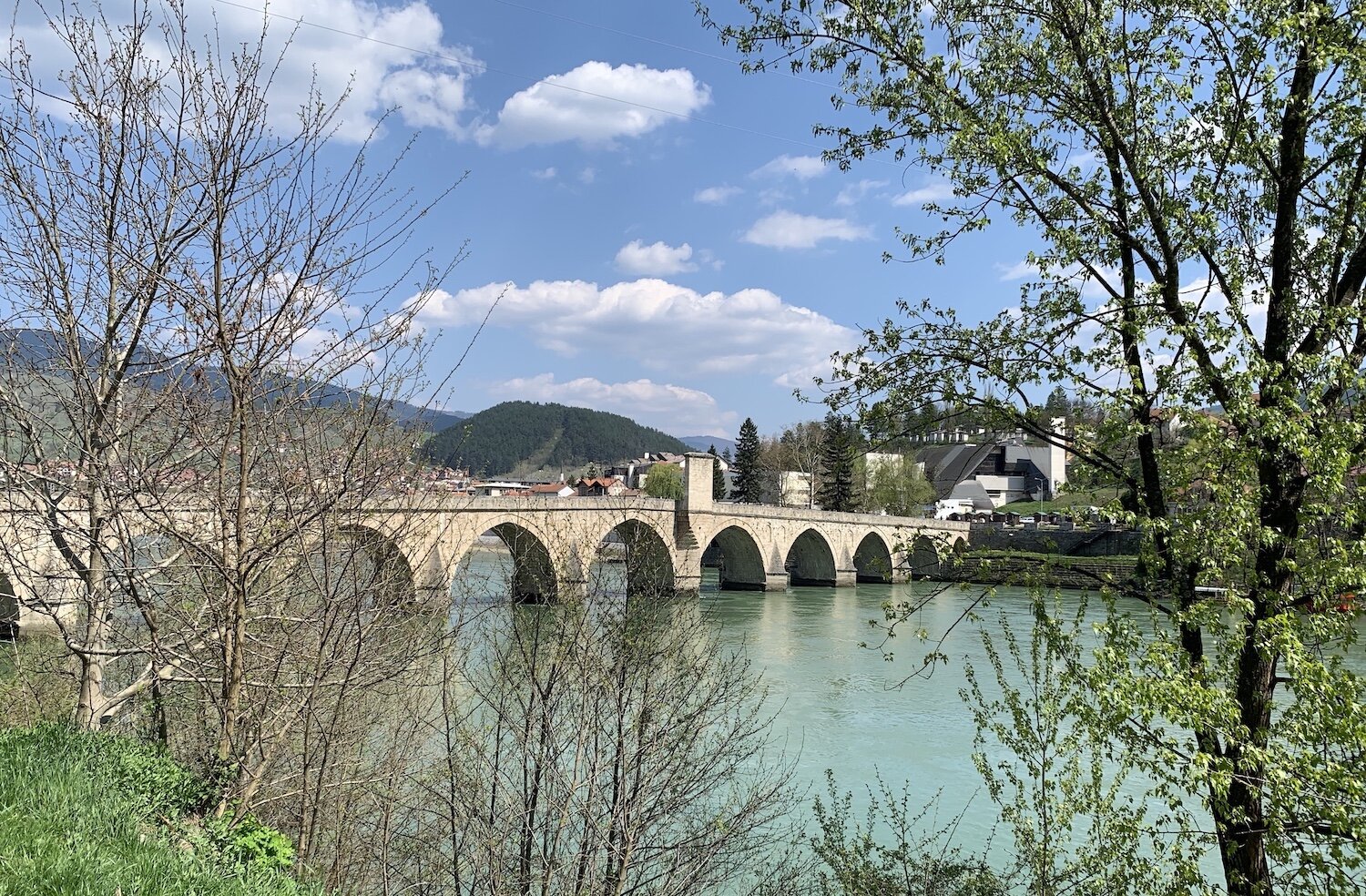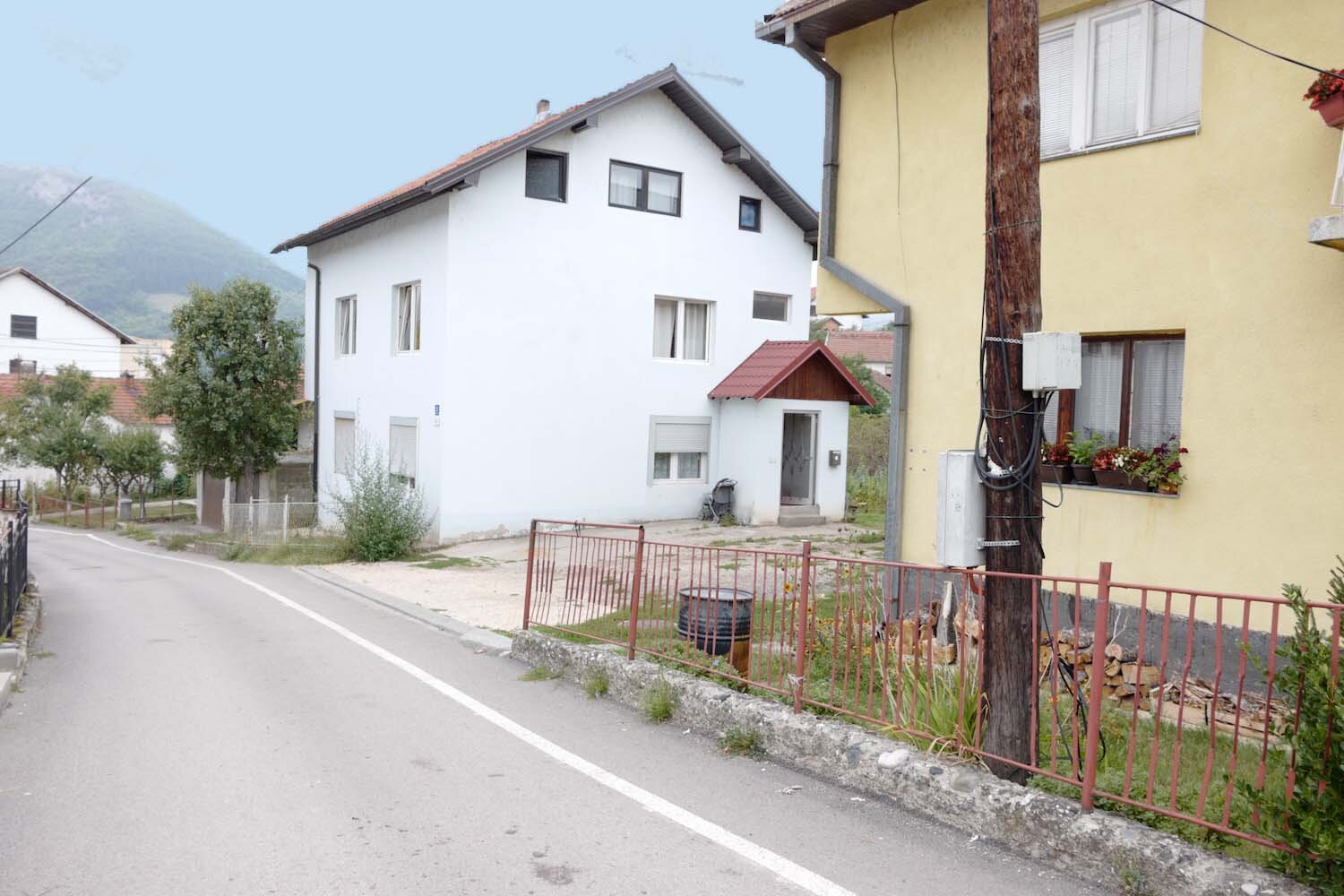Since 1577, the one constant in Višegrad has been its bridge. In his Nobel prize-winning novel The Bridge on the Drina, Ivo Andrić described how Višegrad “owed its existence to the bridge and grew out of it as if from an imperishable root.”
Around 1570, when eastern Bosnia was under Ottoman rule, Grand Vezir Mehmed Paša Sokolović, from whom the bridge takes its name, commissioned construction of the bridge. Construction was completed seven years later and the bridge was named a UNESCO World Heritage site in 2007.
For over four hundred years, the bridge has been a witness to what has happened in Višegrad. It graces the river to bring people from both sides together, but also is a silent bystander, even at times an unwilling accomplice. The Bridge on the Drina describes how Ottoman Turks displayed the severed heads of Orthodox Christians on stakes mounted on the bridge. The bridge would see violence on its stones again several hundred years later.
Višegrad lies in south-eastern Bosnia along the border with Serbia. The Bosnian Serb army infiltrated Višegrad early in 1992 to cleanse the majority Muslim population from the eastern corridor. Even though the Bosnian Serb army did not face military opposition, cousins Milan and Sredoje Lukić, who led a Bosnian Serb paramilitary group, terrorized the town.
On June 14, 1992, the paramilitary group ordered 70 Bosnian Muslims into a house on Pionirska street. After first robbing these individuals and sexually assaulting and raping the women, the Bosnian Muslims were barricaded inside a house presoaked with fire accelerant. Then the assailants set the house on fire. Fifty-nine people were killed and those who miraculously survived the fire testified at the criminal trial of the Lukić cousins.
Roughly two weeks after the Pionirska fire, the paramilitary group ordered more Muslim civilians into a house at Bikavac, locked them inside, and set the house on fire. At least 60 people burned alive at the Bikavac fire.
The Pionirska Street house has been rebuilt and there is a small memorial plaque on the house to the victims. The house in Bikavac has been torn down and only an empty grass lot remains on the site of the fire.
“The Pionirska street fire and the Bikavac fire exemplify the worst acts of inhumanity that a person may inflict upon others. In the all too long, sad and wretched history of man’s inhumanity to man, the Pionirska street and Bikavac fires must rank high.”
In addition to the two fires, hundreds of Bosnian Muslim men were taken to the bridge and the banks of the Drina and executed, some of which at the hands of Milan and Sredoje Lukić. Other men simply disappeared. Bodies were found washed up along the Drina and in other mass graves in the area. One witness at the Lukić trial, who for security measures was identified as witness VG-115, described the Drina as “foamy with blood” from the daily killings.
As a result of the Dayton Accord, which ended the conflict in 1995, Višegrad lies within the border of the Republika Srpska, the Bosnian Serb controlled territory within Bosnia. In 1991, the population of Višegrad was 62.5% Muslim and 32.6% Serb. In 1997, less than 1% of the population in Višegrad was Muslim.
One post-conflict issue is acknowledgement from all parties about the crimes that were committed. In 2014, Bosnian Serb police and authorities scratched the word “genocide” from a victims memorial located at the Muslim cemetery. The word “genocide” was rewritten in black ink over the defaced stone.
Defaced monument at the Muslim cemetery.
The Office of the Prosecutor at the International Criminal Tribunal for the Former Yugoslavia did not charge the crime of genocide for events that occurred in Višegrad, therefore the tribunal did not make a determination about whether the crimes here met the legal definition of genocide. However, the tribunal still established a record of evidence about what happened in Višegrad to prevent the truth from being lost in the voice of deniers.
When telling the story of its past Andrić perhaps could anticipate the future in this town. That despite tragic events, the bridge would remain steady and “sh[ake] from itself, like dust, all the traces which transient human events had left on it and remained, when all was over, unchanged and unchangeable.”
Travel Tips
The drive on highway M5 between Višegrad and Goražde, before the turn to Sarajevo, is one of the most beautiful, scenic drives in Bosnia.
When driving around Višegrad, you will see what appears to be an unnecessary number of police officers standing on the sides of the road. If you are pulled over, for reasons which may be unclear, telling the officer that you do not speak Srpski may prompt the officer to wave you on.
There is a Visegrad in Hungary. When entering Višegrad into your navigation, double check that you have selected the city in Bosnia.
The area of land that protrudes into the Drina near the bridge is called Andrićgrad, a newly built area of the city with shops, restaurants, and a cinema devoted to author Ivo Andrić.
Google Maps cannot identify Pionirska Street on a map. The city map above shows where the Pionirska house is located. Google Maps also may not provide accurate driving directions to the location. To get to Pionirska Street, head towards the large buildings on the right side of the map - Vuk Karadžić School. Heading east on the left side of the road just before arriving at the lower end of the school, you will see an empty lot. The Pionirska house is located at the end of the lot on the right side, slightly down the hill.






